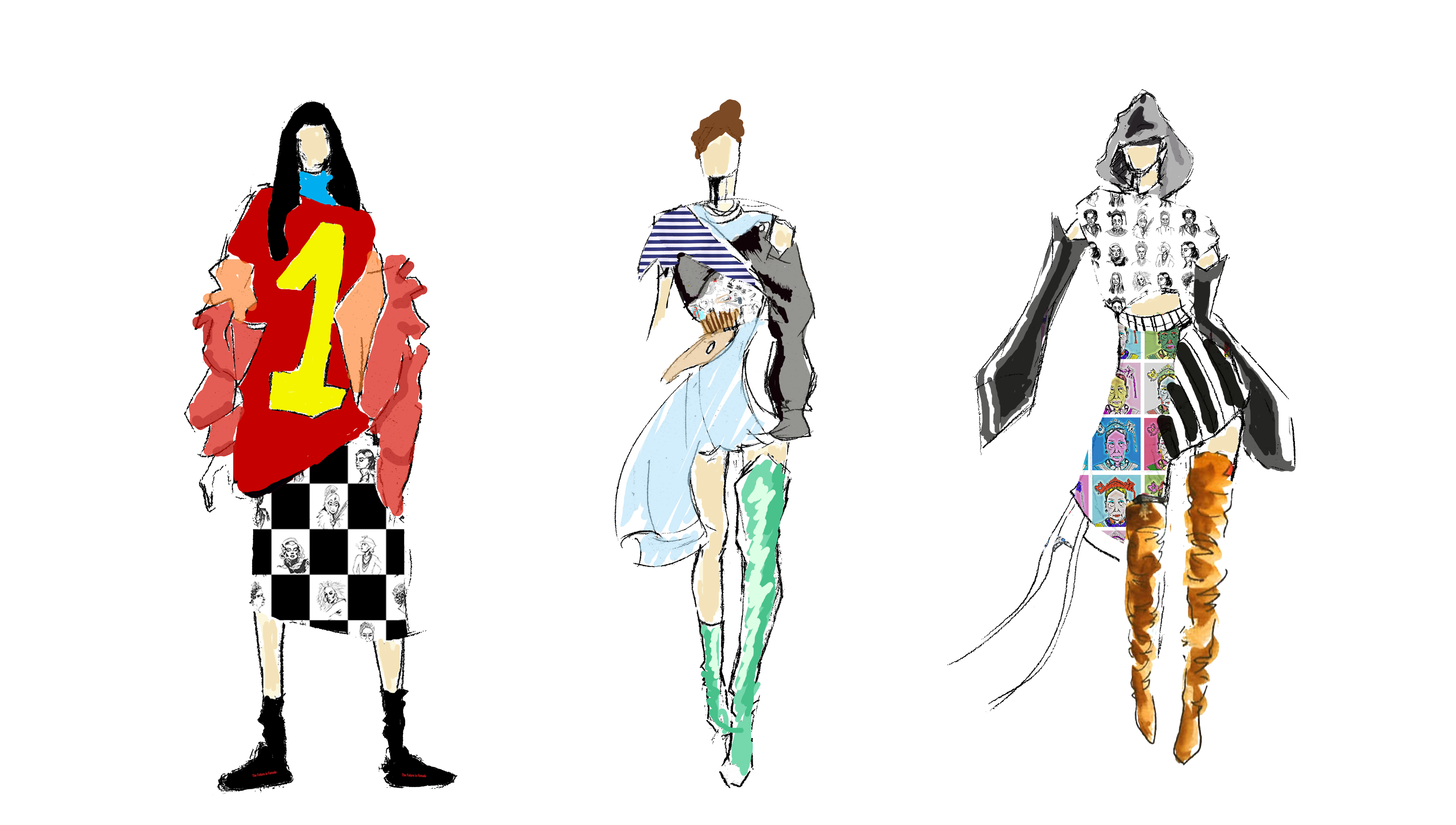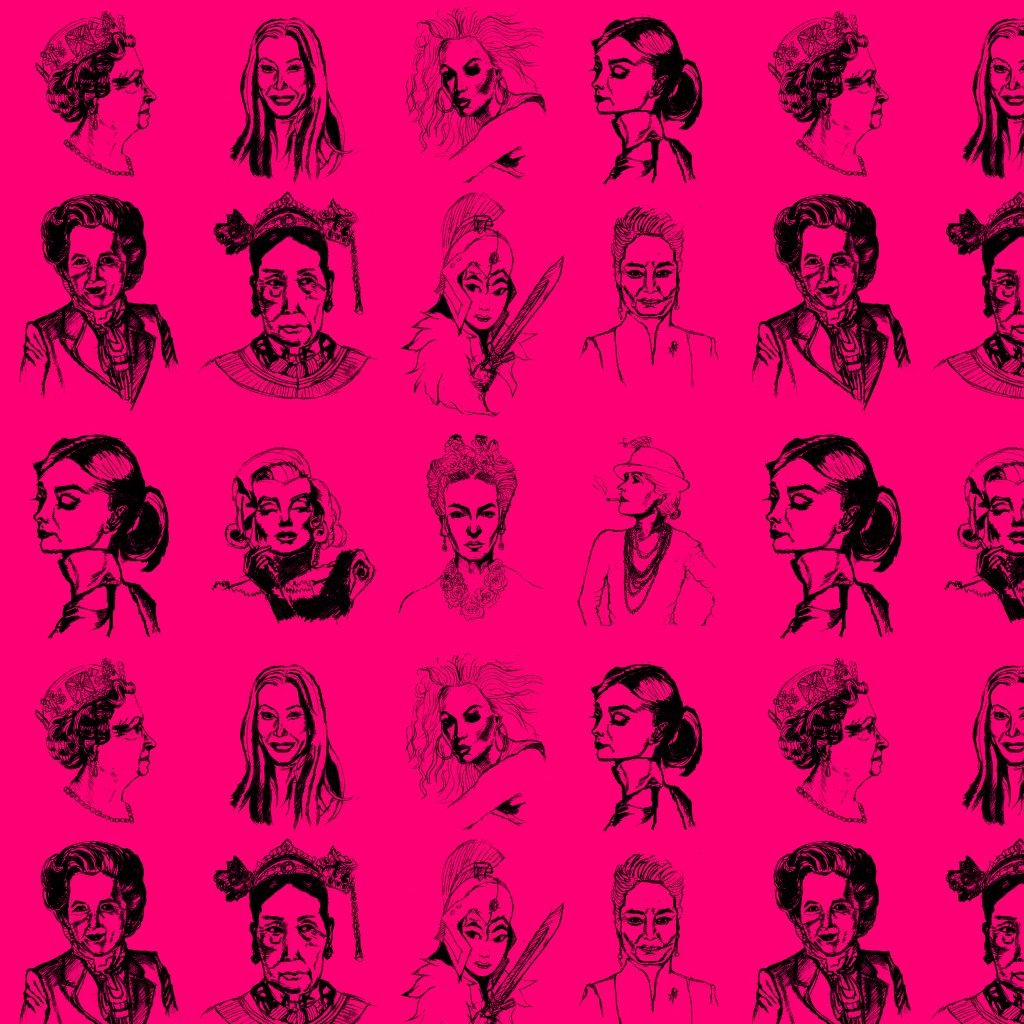“Street Heroine”
Main Concepts
Growing up in a typical traditional conservative Chinese family, I was stressed by the moderate and obedient image of women since I was a little girl. I was always pissed when I heard,” look at the girl in the pink princess dress, she is so cute.” I even further dislike any young friends of mine that are wearing mini skirts and pink hair bands. For me, they are the victim of “Asian Cute Culture”, a culture in my mind reassures women inferior status in a society and reemphasize the fragility and disability the general women race is associated with. The “Street Heroine” collection I design is mean to reverse this public opinion towards woman image being the passive, dependent and vulnerable ones, and completly go against with the traditional elegant and cautious women’s wear. The women under my collection emit masculinity, strength and deterrence as they walk down the runway. My garments are mean to overthrow sex prejudice, appear intimating, and cause visual threats and mental discomfort towards all mankind.
Street Wear Approach
Rebecca Solnit in her book Wanderlust: A History of Walking once said, “The magic of the street is the mingling of the errand and the epiphany.” Street has played such significant role in human development history. The very first boycott, riot and revolution all happened on street. Streets witness the entire human progress and pushes the world forward. What’s on the street at the moment determines what’s in the upcoming future. For such importance and influence streets carry, I believe the voice of feminism should rise from the street also. That’s one of the very reasons I see street wear as the most representative voice for feminism. Here, it’s where the fresh air got blew in and grew into a storm.
Final Illustration
Gallery
Process
Repeating Units
Sketching Historical Heroine Figures
Developing Sketches into Patterns in Photoshop
I first came up with this repeating unit, however, after it was finished I found it to be much more like a poster rather than a pattern. Therefore, I abandoned the idea of putting too many thoughts into the arrangement of the each figure I drew, instead, focusing more on the simplicity and clarity of the patterns. So I restructured my mind set into making each image equal proportional and visually appealing, organized from a distance. I realized for patterns to look good in real life design world, it has to fulfill the requirements of being appreciated in a whole not every single individual that forms it. In my final patterns, this concept is combined thoroughly in my design as you can see in the following content.
Final Patterns
36*36 inch/1 yard
Diving into Final Illustration
Pencil Sketch
Design Concepts & Color Studies
Reflection
Connecting to Seminar Research
“A person who sees only fashion in fashion is a fool,” French novelist Honore de Balzac once said. In my opinion, 21st century female fashion should be all about feminism, the empowerment of all women race. Fashion works as an essential tool for women to express their updated society role and status. The introduction of masculine features and street wear elements enhance this message of women empowerment today’s fashion world. The 2017 Spring Dior fashion show launched a white t-shirt with the slogan “the future is female” . This adoption by Christian Dior of slogan t-shirts, implying Dior’s small but significant transition from traditional extreme feminine formal wear to the more unisex causal street wear. My research in seminar mainly explores on the relationship between femininity and feminism in Dior Spring 2017 Spring Ready Wear Collection. The research got me into thinking in advance of connecting femininity with feminism and finding the exact right amount of each element that can make a garment “girly” and powerful. This idea always form into my main inspiration of the design, which is clothing that appears masculine, intimating, and powerful, but won’t necessary fit a man because its lack of obvious female traits on the garments. Christian Dior once emphasized, “there is nothing I would like better than to make very woman look and feel like a duchess.” The implication of this sentence in nowadays can be much more, and I want my work to be closely related about achieving that.
Comparing the Two Processes
I find the research process in seminar to be harder than it is in studio. It’s hard to think of my major intention of this project until I start to really sketch it out. After I see the sketches done, I immediately know what’s the inner voice in my heart that I want to speak it out and design on. However, before that I only knew the ideas I was fond with were street style and feminism, which were super broad and vague topics. Sketching really helped me narrow the main topic into sub-themes and started to find existing collections that could help me elevate my design. That’s how I started to look at extreme feminine brand like Dior and see how they had purposely lost some femininity in their recent collection’s design and added some street elements to fulfill the purpose of new growing female social identity. Therefore, this specific finding really helped me to get dive into the research in seminar with a really clear and strong direction, which to to identify the balance and transition of femininity and feminism in Dior’s 2018 Spring Ready Wear Collection and define their significance to the future trend of women fashion.
















